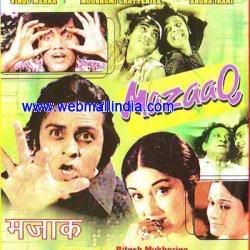
Product Details
Paperback: 496 pages
Publisher: Pearson Education; 1st edition (June 26, 2001)
Language: English
ISBN-10: 0130648841
ISBN-13: 978-0130648846
Product Dimensions: 9.2 x 7 x 1.4 inches
Patterns are basically design solutions for recurring problems, so Core J2EE Patterns contains recurring design solutions for persons using J2EE. The authors break these solutions down into presentation, business, and integration patterns.
As is usual with pattern books, you won't find much code here. The book majors on problem discussions, analysis of the factors you should consider in your design, and strategies for the solution implementation. The authors constantly encourage abstraction, code modularity, non-duplication of code, network efficiency, code maintainability, and solution reusability.
While these are the aims we've been encouraged to pursue for years, too many pattern books operate at such a high theoretical level they fail to appeal to working programmers. In practice, you could use the patterns discussed with any language, but by concentrating on using Java, Core J2EE Patterns is able to take a more hands-on approach.
Okay, so you won't find detail at the level of APIs, but you will find discussion of where to implement functionality to best leverage Java's architecture and which Java mechanisms to use: for example, implementing entity beans as coarse-grained--rather than fine-grained--objects to reduce the transaction overhead. Not the sort of implementation advice you'll find in language-agnostic pattern books.
Core J2EE Patterns enables you to dramatically cut the design time on enterprise-level Java-based projects while increasing the likelihood that the project will reach a timely fruition. Recommended. --Steve Patient, Amazon.co.uk
From the Back Cover
Over the last few years, Java 2 Platform, Enterprise Edition (J2EE) technology has emerged and matured as a standard platform for building enterprise applications. While the platform has matured into a solid offering for developing and deploying enterprise applications, it does offer its challenges. As developers, often we confuse learning the technology with learning to design with the technology. In this book, senior architects from the Sun Java Center, Sun's Java consulting organization share with the reader their cumulative design experience with and expertise on J2EE technology.
The primary focus of the book is on patterns, best practices, design strategies, and proven solutions using the key J2EE technologies including JavaServer Pages (JSP), Servlets, Enterprise Java Beans (EJB), and Java Message Service (J.M.S) API. Other ancillary technologies like JDBC and JNDI are also discussed as relevant to their usage in these patterns. The J2EE Patterns catalog with 16 patterns and numerous strategies is presented to document and promote best practices for these technologies.
In addition to the patterns and strategies, the book offers the following:
Presents various design strategies for the presentation tier and business tier design.
Identifies bad practices in presentation, business, and integration tiers, and offers directions to remedy them by using certain patterns, strategies, and refactorings.
Refactorings for various tiers and mechanics to move away from a bad implementation to a better solution.
Sample code and examples for patterns, strategies, and refactorings.
Core J2EE Patterns delivers:
Proven solutions for enterprise applications
J2EE Patterns Catalog with patterns for JSP technology, EJB technology, and J.M.S.
Identifies bad practices and recommends solutions
Refactorings to improve existing designs using patterns, strategies, and best practices
UML Diagrams illustrate structure and behavior of each pattern
For more free books download visit this blog daily
Download
.






0 Response to "Core J2EE Patterns: Best Practices and Design Strategies"
Post a Comment